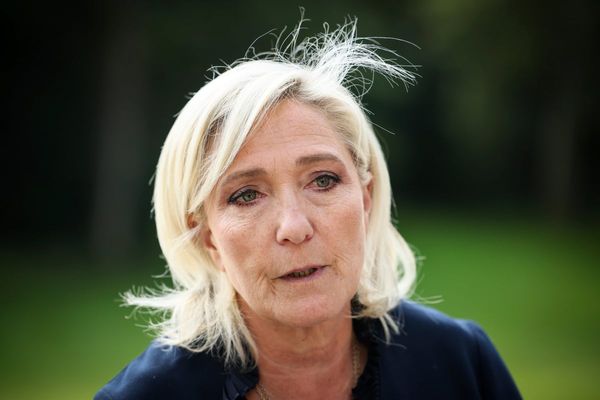
The Russian invasion of Ukraine offers an unexpected opportunity for the United States to deal decisively with Russia in a way that also advances US strategic objectives in Asia.
This may seem counterintuitive, given that the crisis has so far pulled US attention away from Asia. But by playing his hand now, at a moment when the Chinese military is probably still a few years from completing the modernisation needed to move decisively against Taiwan, Russian President Vladimir Putin has created a window of opportunity for the United States to get its affairs in order in Europe, with a view to having greater bandwidth to deal with China in a future crisis.
There are two basic ways for the United States to exploit this window.
One would be to cut a deal that grants Putin his wish for a sphere of influence over Ukraine. The temptation to make an accommodation along these lines — for example, by inducing Ukrainians into a posture of neutrality or forswearing NATO membership — is likely to grow once Putin begins grabbing additional territory. The logic behind such a deal would be that satiating Putin in Europe would free up US resources to deter China.
The problem with this approach is not primarily moral but strategic. Even if Putin honoured the terms — and he assuredly would not — the practical result would be to simply shift the scrimmage line west, to the borders of Poland and Romania. And since these states, unlike Ukraine, are NATO allies, the United States would be on the hook to send even more troops the next time a crisis flares up. Far from freeing up US resources for Asia, this would demand additional resources for Europe.
The other option for the United States is to engineer a significant defeat for Russia at the hands of Ukrainians — a defeat so significant that it forces Putin to not only back down but also rethink his entire foreign policy. Under this strategy, the United States would arm and abet the Ukrainians in much the same way as it supported Afghanistan’s mujahideen in the 1980s. The goal would not just be to stop Russia in Ukraine but to prompt Putin to fundamentally reassess the costs and benefits of his preferred westward line of expansion and to turn his attention east.
There are historical precedents for such a strategy. Both tsarist Russia and the Soviet Union undertook dramatic foreign-policy recalibrations after major defeats on the Russian periphery. It was only after its shocking defeat by Japan in 1905 that Russia was amenable to Britain’s efforts at forming a common cause against the German Empire. And only after the Soviet Union became hopelessly bogged down in Afghanistan was Soviet leader Mikhail Gorbachev willing to engage in serious détente with US president Ronald Reagan.
In a similar way, the West should want Ukraine to become such an insoluble ulcer that Putin eventually concludes, on the basis of Russia’s own interests, it is not worth the effort to try to conquer and subdue. According to reports of dissent in Moscow, this is precisely the scenario that some of Russia’s ex-generals apparently fear.
Realising those fears should be the US aim in Ukraine. This will only be possible with more capabilities than the Biden administration has so far been willing to provide: Stinger missiles, counter-drone rifles and mines, as well as an ongoing flow of anti-tank missiles and small arms ammunition. In parallel, the United States and its allies can help the Ukrainians develop the infrastructure for a national redoubt in the west of the country, including secure communications equipment and support for developing overland supply routes in the event of prolonged Russian air dominance.
In tandem, US diplomacy should exploit the shock that a Russian invasion will generate in European politics. As the recent German decision to suspend the Nord Stream 2 approval process and the Polish decision to increase defense spending both illustrate, the crisis presents a once-in-a-generation opportunity to galvanise greater burden-sharing among allies. But the opportunity is perishable. Exploiting it will require the administration to make much more of a priority than it has to date of pushing more allies to increase defense spending and provide arms to Ukraine.
The point should be to create a glacis of opposition, both in Ukraine and in Europe, that compels Putin to rethink his current trajectory. Of course, sanctions should be part of this — including tougher measures against Russian banks, energy exports and sovereign debt than the Biden administration has so far been willing to implement. But the West should be under no illusions at this point about the ability of sanctions to alter Russian behavior.
As a recent IMF report found, years of sanctions since Russia’s 2014 invasion of Ukraine have barely dented Russian economic growth, producing a smaller impact than the decline in oil prices during the same period. With oil close to $100 a barrel and Chinese President Xi Jinping backstopping Putin, Washington should expect Moscow’s insulation to sanctions to be high for the foreseeable future.
Eventually — and that time is hard to imagine now — the United States will need to offer positive incentives for Russia to look east rather than west. It could do so, for example, by removing obstacles to investment by US allies such as Japan and South Korea in Russia’s far east — investments the Russians desperately need if they are to avoid strategic dependency on Beijing, but which have been stymied by US sanctions. The United States could also ease the barriers to Russian arms purchases for countries such as India and Vietnam, which are eager to acquire Russian help in resisting Chinese expansion.
For any of these incentives to work, however, Putin first needs to suffer a strategically significant defeat in Ukraine. A serious US strategy would stiffen the obstacles to his advance in Europe while being willing to remove obstacles in Asia when conditions warrant.
Ukraine, in other words, could be the fulcrum for a global US strategy aimed at reorienting Russia’s attention toward the theatre that will matter most to the United States over the coming decade. The alternative — incrementally surging forces and attention to Europe every time Putin gets aggressive, never giving the Ukrainians the full tools they need for self-defense, and not offering Russia incentives for anything other than its current course — will no longer work.
The United States is lucky that China is probably not yet in a position to exploit the West’s predicament and confront it with a two-front crisis beyond its ability to handle. Next time, the United States may not be so lucky.







